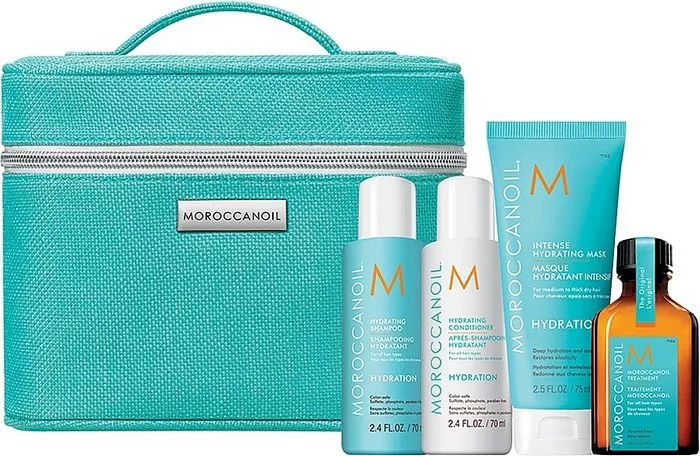Moroccan oil treatment has become a buzzword in hair care, celebrated for its transformative effects on hair health and appearance. But what exactly is it? This guide dives deep into the origins, benefits, and application of Moroccan oil, offering a clear understanding of why it’s a staple in salons and homes worldwide.
Origins and Extraction of Moroccan Oil
Moroccan oil, commonly known as argan oil, is derived from the kernels of the argan tree (Argania spinosa), native to Morocco. For centuries, Moroccan communities have used this oil for culinary, cosmetic, and medicinal purposes.
Traditional Extraction: The process involves harvesting argan fruits, drying them, and manually extracting the kernels. These kernels are cold-pressed to produce oil, preserving nutrients.
Modern Methods: While traditional methods are labor-intensive, modern production uses mechanical presses, though high-quality brands still prioritize cold-pressing to retain efficacy.
Culinary vs. Cosmetic Oil: Culinary argan oil is roasted for a nutty flavor, whereas cosmetic oil remains unroasted, maintaining its lightweight texture and nutrient profile.
Key Components and Their Benefits
Moroccan oil’s magic lies in its rich composition:
- Fatty Acids (Oleic & Linoleic): Moisturize and strengthen hair, reducing breakage.
- Vitamin E: A powerful antioxidant that repairs damage and promotes scalp health.
- Antioxidants: Combat free radicals from pollution and UV exposure.
- Phenolic Compounds: Offer UV protection, preventing color-faded hair.
How the Treatment Works
Moroccan oil penetrates the hair shaft, delivering nutrients directly to the core. It acts as a multi-tasking treatment:
- Sealing Cuticles: Smooths the hair surface, enhancing shine and reducing frizz.
- Heat Protection: Forms a barrier against styling tools up to 450°F.
- Hydration: Locks in moisture without greasiness when used correctly.
Benefits for Hair
Regular use leads to visible improvements:
- Enhanced Shine: Reflects light through smoothed cuticles.
- Frizz Control: Tames flyaways in humid conditions.
- Damage Repair: Reduces split ends and breakage.
- Heat Protection: Shields hair during blow-drying or straightening.
- Improved Manageability: Detangles knots, making styling easier.
Who Should Use Moroccan Oil?
While suitable for all hair types, it’s particularly beneficial for:
- Dry or Damaged Hair: Replenishes lost moisture.
- Curly or Frizzy Hair: Defines curls and smooths texture.
- Color-Treated Hair: Preserves vibrancy and prevents dryness.
- Fine Hair Users: Apply sparingly to avoid weighing hair down.
Types of Moroccan Oil Products
- Pure Argan Oil: 100% natural, ideal for minimalists. May feel heavier.
- Blended Formulas (e.g., MoroccanOil Brand): Include silicones (like dimethicone) for smoother application and added heat protection.
Choosing the Right Product
- Check Ingredients: Ensure argan oil is listed high (avoid “fragrance oils”).
- Avoid Additives: Opt for fewer synthetics if seeking natural solutions.
- Consider Hair Type: Fine hair may prefer lightweight blends; thick hair can handle pure oil.
Step-by-Step Application Guide
- Damp Hair: Post-shower, towel-dry hair.
- Dispense a Small Amount: Start with a nickel-sized portion (adjust based on hair length/thickness).
- Focus on Ends: Apply mid-length to ends, avoiding roots if oily.
- Style as Usual: Blow-dry or air-dry. Use extra oil as a pre-shampoo mask for deep conditioning.
Common Mistakes to Avoid
- Overapplication: Leads to greasiness.
- Skipping Roots: Oily scalps should avoid root application.
- Using Post-Hot Tools: Apply before heat styling, not after.
Sustainability and Ethical Considerations
Argan trees are endangered, making ethical sourcing vital:
- Fair Trade Cooperatives: Support women-led cooperatives in Morocco.
- Eco-Friendly Practices: Look for brands contributing to reforestation.
Debunking Myths
- Myth 1: “It weighs hair down.” Truth: Use sparingly for lightweight hydration.
- Myth 2: “Only for women.” Truth: Men benefit equally for beards or scalp health.
- Myth 3: “Solely for curly hair.” Truth: All textures gain shine and protection.
DIY Moroccan Oil Treatments
- Pre-Wash Mask: Mix 2-3 drops with coconut oil; leave for 20 minutes before shampooing.
- Overnight Treatment: Apply to ends, cover with a silk cap, and rinse in the morning.
Comparison with Other Oils
- Coconut Oil: Heavier; better for deep conditioning.
- Olive Oil: Less effective at heat protection.
- Jojoba Oil: Mimics scalp oil but lacks UV protection.
Scientific Backing
Studies highlight argan oil’s role in reducing hair breakage and improving elasticity. Dermatologists often recommend it for damaged hair.
Conclusion
Moroccan oil treatment is a versatile, nutrient-rich solution for achieving healthier, shinier hair. By selecting quality products and applying them correctly, anyone can harness its benefits. Prioritize ethically sourced options to support sustainability. Whether your hair is curly, straight, fine, or thick, Moroccan oil offers a natural path to radiant locks. Give it a try—your hair will thank you!
Related topics:
The Moroccan Oil Treatment: All You Need To Know
10 Tips to Help You Use Wild Growth Light Oil Moisturizer
Dry Brittle Hair: Symptoms, Causes & Treatments


